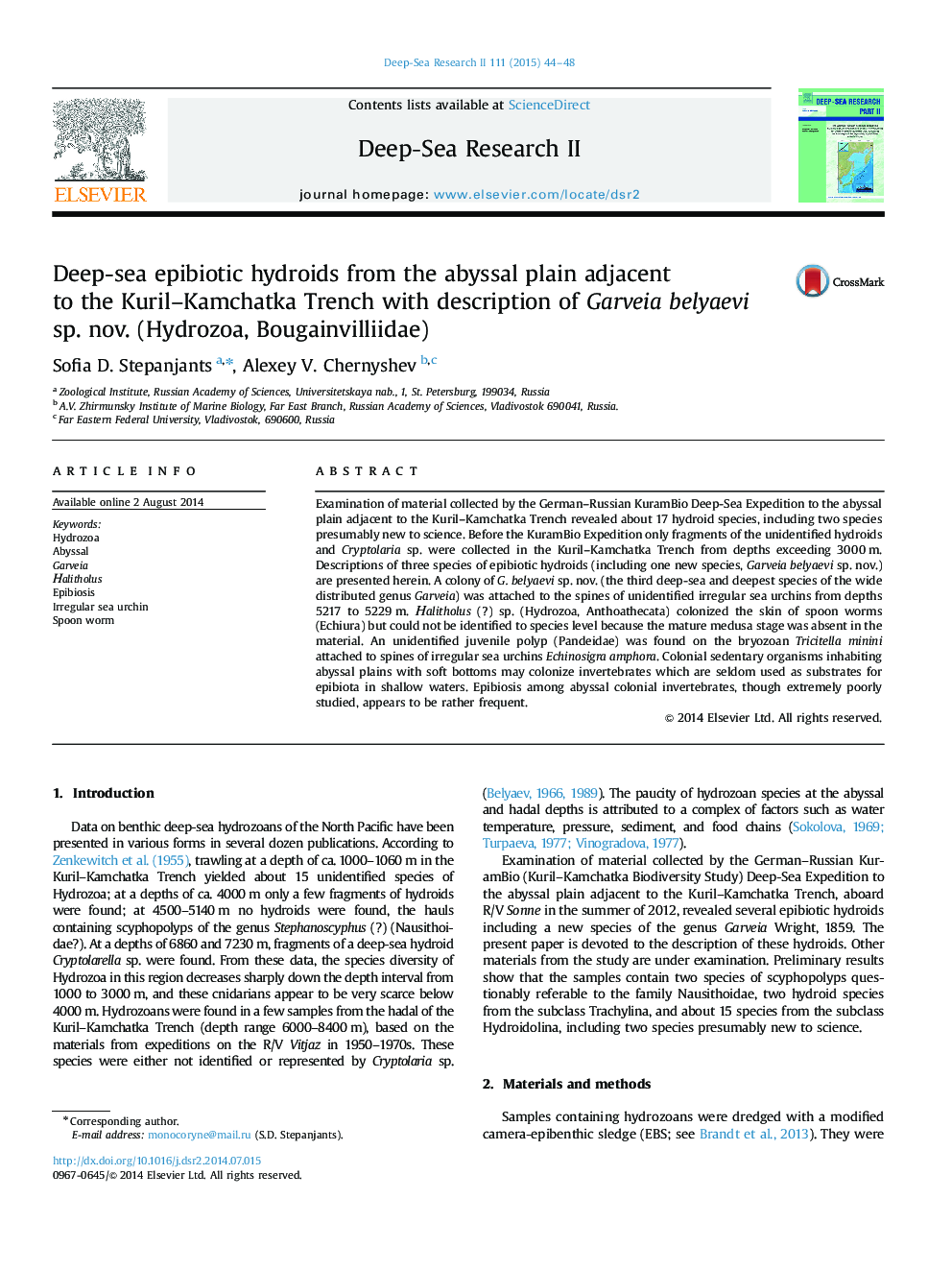| Article ID | Journal | Published Year | Pages | File Type |
|---|---|---|---|---|
| 4536278 | Deep Sea Research Part II: Topical Studies in Oceanography | 2015 | 5 Pages |
Abstract
Examination of material collected by the German-Russian KuramBio Deep-Sea Expedition to the abyssal plain adjacent to the Kuril-Kamchatka Trench revealed about 17 hydroid species, including two species presumably new to science. Before the KuramBio Expedition only fragments of the unidentified hydroids and Cryptolaria sp. were collected in the Kuril-Kamchatka Trench from depths exceeding 3000Â m. Descriptions of three species of epibiotic hydroids (including one new species, Garveia belyaevi sp. nov.) are presented herein. A colony of G. belyaevi sp. nov. (the third deep-sea and deepest species of the wide distributed genus Garveia) was attached to the spines of unidentified irregular sea urchins from depths 5217 to 5229Â m. Ðalitholus (?) sp. (Hydrozoa, Anthoathecata) colonized the skin of spoon worms (Echiura) but could not be identified to species level because the mature medusa stage was absent in the material. An unidentified juvenile polyp (Pandeidae) was found on the bryozoan Tricitella minini attached to spines of irregular sea urchins Echinosigra amphora. Colonial sedentary organisms inhabiting abyssal plains with soft bottoms may colonize invertebrates which are seldom used as substrates for epibiota in shallow waters. Epibiosis among abyssal colonial invertebrates, though extremely poorly studied, appears to be rather frequent.
Related Topics
Physical Sciences and Engineering
Earth and Planetary Sciences
Geology
Authors
Sofia D. Stepanjants, Alexey V. Chernyshev,
